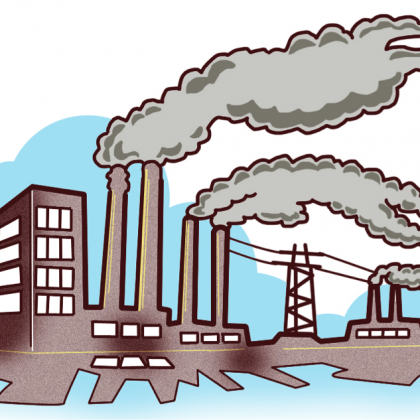20
2016
EPA’s Year Ahead 2016
Clean Power Plan • The supreme court stayed the implementation of this rule until the D.C. court rules on the pending litigation • This means states are not obligated to take action to meet the deadlines in the plan • States can voluntarily work towards these deadlines and goals • If the D.C. court rules in the EPA’s favor, only the Supreme Court can lift…
03
2015EPA Seeks Comment on CSAPR Update for 2008 Ozone NAAQS
On 12/3/15, the EPA proposed updates to the Cross State Air Pollution Rule (CSAPR) in order to incorporate the 2008 NAAQS for ozone. The rule is proposing to update the CSAPR NOx ozone-season budgets for 23 states that affect downwind states’ ability to comply with the 2008 ozone standard. The EPA would issue a Federal Implementation Plan, or FIP, for meeting these budgets if the…
17
2015
What you need to know about the EPA’s new Sewage Sludge Incinerator Rule
In April of 2015, the EPA proposed a Federal Implementation Plan for sewage sludge incinerators (SSI units). Affected facilities are required to comply with the plan by March 21, 2016. The plan specifies two subcategories of SSI units: multiple hearth and fluidized bed units. Based on that classification, units have certain emission standards they are required to meet. In addition, there are numerous testing and…
15
20152008 OZONE NAAQS: Regulatory Update
On August 19th, 2015, the EPA proposed to take action on the 36 Marginal non-attainment areas under the 2008 Ozone NAAQS. Below is a summary of the EPA’s three proposals on these areas: 1. 17 of these areas will receive attainment status based on 2012-2014 certified data. 2. 8 areas will receive 1-year attainment date extensions based on their 4th highest daily maximum 8-hour value…
22
2015
Startup, Shutdown and Malfunction Emissions – EPA Final Action
Is your facility or state affected by the EPA’s Startup, Shutdown and Malfunction Emissions final action? If your state is affected, this could require a change to your facility operations, to your DAS configuration, and to your reporting requirements. The EPA issued a final action on May 22, 2015 to ensure states have implementation plans in place for emissions to be fully compliant with the…
16
2015EPA’s Clean Power Plan: a Brief Overview
As part of President Obama’s Climate Action Plan, the EPA developed a plan to cut carbon dioxide emissions from power-generating sources. Known as the Clean Power Plan, it provides guidelines for states on how to achieve CO2 emission reduction. The plan is slated to be finalized by mid-summer 2015. Below is a brief summary of the proposed plan. The following are steps that states will…
01
2015
The EPA’s Year Ahead in Air Regulations
There are quite a few major regulations and standards that the EPA has on its agenda for 2015. These are all especially relevant to the Region 1 Area. See below for details: Carbon Pollution Standards for New/Modified/Existing Power Plants Comment period for these proposed regulations has closed. Regulation sets a lbs/MWhr rate limit for each state. States have to meet an interim rate goal by…
01
2015
CT Section 22 Updates
Two subcommittee meetings were held in February and March to discuss the proposed revisions to RCSA 22a-174-22. The topics discussed included Emissions Testing and Compliance. Comment period on the Emissions Testing section is now closed, but comments are open on the Compliance section until April 20th. Below is a summary of the proposed new rule. Emissions Testing Facilities can show compliance with emissions limitations…
18
2014Calibrations–Part 60 vs 75
Calibrations are an integral part of operating a CEM system effectively. However, depending on which regulations your site falls under, this process can be subject to different requirements. It is crucial that you understand these differences, especially if you are a site that is subject to both regulations, in order to maintain compliance and minimize downtime. Below are important ways in which Part 60 calibrations…
11
2014
Tips for Easing the Reporting Process in the Off-Season
Reporting comes only once every three months, so it can be easy to push it to the very bottom of your concerns list once the 30th is over. However, there are many things that can be done during the course of a quarter that greatly facilitate your reporting process once that dreaded month rolls around. The following are simple, time-saving steps that we find very…

